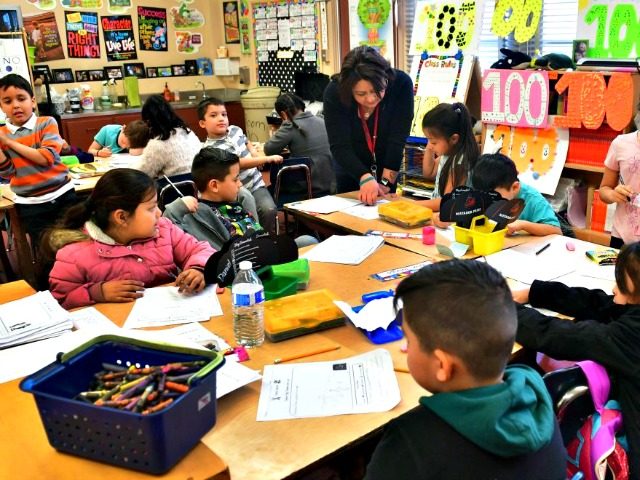President Donald Trump signed an executive order on Monday that would provides emergency scholarships for students who have been deprived of in-person learning for months because of coronavirus lockdowns that have shuttered schools for months.
“The Secretary of Health and Human Services shall take steps, consistent with law, to allow funds available through the Community Services Block Grant program to be used by grantees and eligible entities to provide emergency learning scholarships to disadvantaged families for use by any child without access to in-person learning,” the executive order said.
The order said the scholarships can be used for:
• Tuition and fees for a private or parochial school
• Homeschool, microschool, or learning-pod costs
• Special education and related services, including therapies
• Tutoring or remedial education
USA Today reported on the development but said the affect could be limited given a Joe Biden presidency:
Officials confirmed [Education Secretary Betsy] DeVos worked on the plan with the White House and the Department of Health and Human Services, which would provide families with the money through block grants, according to Trump’s order. Details are scarce, including how much money would be available, when families could access it and whether the plan could even launch before President-elect Joe Biden is sworn into office – at which point, he could presumably undo the executive order.
In a statement, DeVos said Trump’s order empowers families “with the freedom and the funds to keep learning going.”
“Many private schools have been forced to shut their doors, and many scholarship providers have fewer resources to support students because of the pandemic,” the statement said.
Trump’s executive order lays out the reasoning behind the executive order, which notes the federal government as already given $13 billion to states and school districts to get students back into classrooms:
The prolonged deprivation of in-person learning opportunities has produced undeniably dire consequences for the children of this country. The Centers for Disease Control and Prevention has stated that school attendance is negatively correlated with a child’s risk of depression and various types of abuse. States have seen substantial declines in reports of child maltreatment while school buildings have been closed, indicating that allegations are going unreported. These reductions are driven in part by social isolation from the schoolteachers and support staff with whom students typically interact and who have an obligation to report suspected child maltreatment. The American Academy of Pediatrics (AAP) has also found that school closures have a “substantial impact on food security and physical activity for children and families.” Additionally, a recent survey of educators found student absences from school, including virtual learning, have nearly doubled during the pandemic, and as AAP has noted, chronic absenteeism is associated with alcohol and drug use, teenage pregnancy, juvenile delinquency, and suicide attempts.
School closures are especially difficult for families with children with special needs. Schools provide not only academic supports for students with special needs, but they also provide much-needed in-person therapies and services, including physical and occupational therapies. A recent survey found that 80 percent of children with special needs are not receiving the services and supports to which they are entitled and that approximately 40 percent of children with special needs are receiving no services or supports. Moreover, the survey found that virtual learning may not be fully accessible to these students, as children with special needs are twice as likely to receive little or no remote learning and to be dissatisfied with the remote learning received.
Low-income and minority children are also disproportionately affected by school closures. In low-income zip codes, students’ math progress decreased by nearly 50 percent while school buildings were closed in the spring, and the math progress of students in middle-income zip codes fell by almost a third during the same period. A recent analysis projected that, if in-person classes do not fully resume until January 2021, Hispanic, Black, and low-income students will lose 9.2, 10.3, and 12.4 months of learning, respectively.
“I am committed to ensuring that all children of our great nation have access to the educational resources they need to obtain a high-quality education and to improving students’ safety and well-being, including by empowering families with emergency learning scholarships,” Trump said in the order.
Follow Penny Starr on Twitter or send news tips to pstarr@breitbart.com

COMMENTS
Please let us know if you're having issues with commenting.